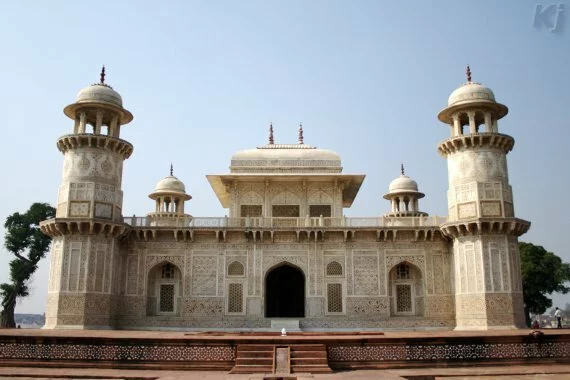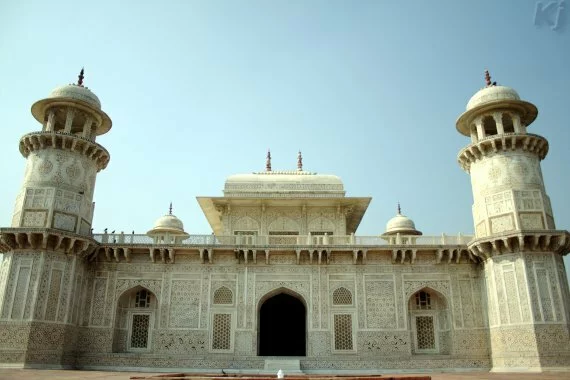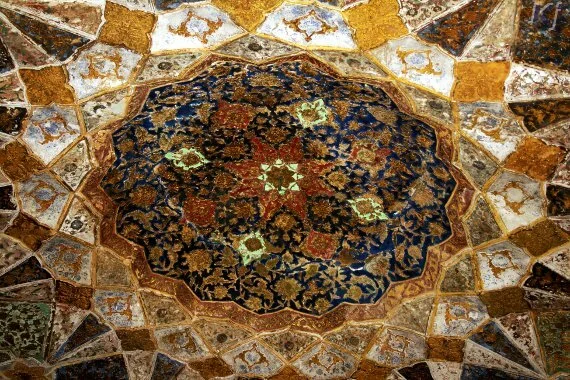I’tmad-ud-Daula’s Tomb, Agra
kjohri | Jan 22, 2011 | Comments 0
I’tmad-ud-Daula’s Tomb is the tomb of Mirza Ghiyas Beg and his wife Asmat Begum. Mirza Ghiyas Beg came to India from Persia and joined the court of Mughal emperor Akbar. He rose in Akbar’s court and Akbar conferred on him the title I’tmad-ud-Daula, which means, the pillar of the State. Mirza Ghiyas Beg had a daughter, Mehrunissa, who married Jahangir in 1611, and became known as Nur Jahan. Mirza Ghiyas Beg’s son, Abdul Hasan Asaf Khan served as a general to Jahangir. Asaf Khan’s daughter, Arjumand Banu Begum, married Prince Khurram (Shah Jahan) and became known as Mumtaz Mahal.
Mirza Ghiyas Beg died in the year 1622. Nur Jahan arranged the construction of the tomb, which was built during the years, 1622-28.
The tomb is located on the eastern bank of the river Yamuna. The tomb is in the center of a Char Bagh, or, four-quartered garden. At the periphery of the square-shaped garden, there are four gateways, one on each side, leading to the tomb.
I’tmad-ud-Daula’s tomb is made of white marble, and the first architecture of Mughal era to have been built in white marble. Prior to this monument, all buildings were made of red sandstone. In that sense, I’tmad-ud-Daula’s tomb was precursor to white marble buildings inside Agra Fort and the incomparable Taj Mahal.
The tomb has a square plan, with octagonal towers at the four corners. Inside, there is a square hall housing the cenotaphs of Mirza Ghiyas Beg and Asmat Begum. There are square rooms in the corners, housing the tombstones of Nur Jahan’s daughter, Ladli Begum and other relatives. The most striking aspect of I’tmad-ud-Daula’s tomb is the decorations on the entire exterior with floral and geometrical designs. Inside, there are more decorations and the inlay work on the ceiling is to be seen to be believed.
Filed Under: Travel
Comments (0)
Trackback URL





